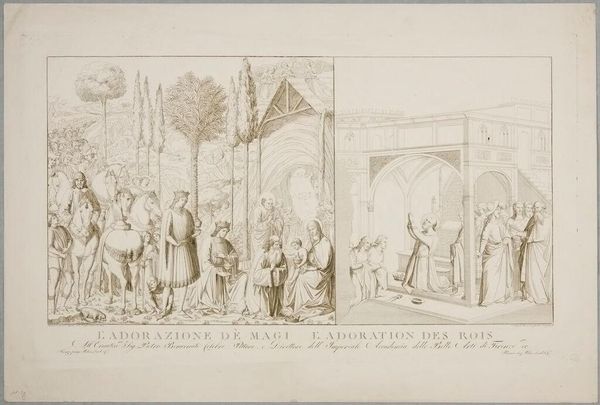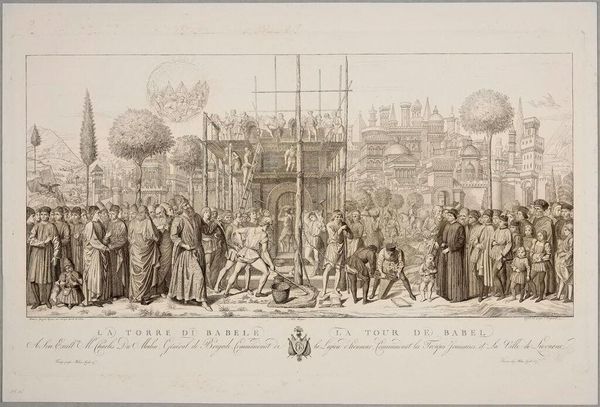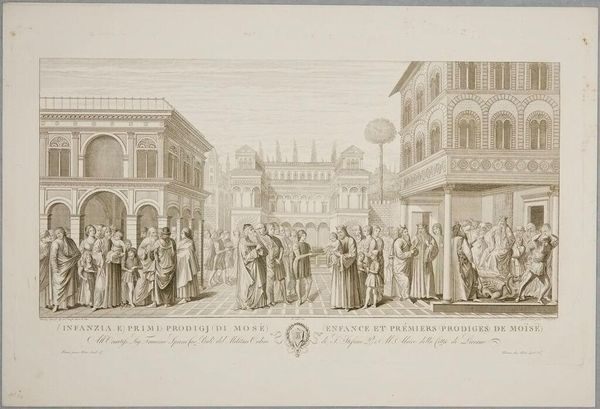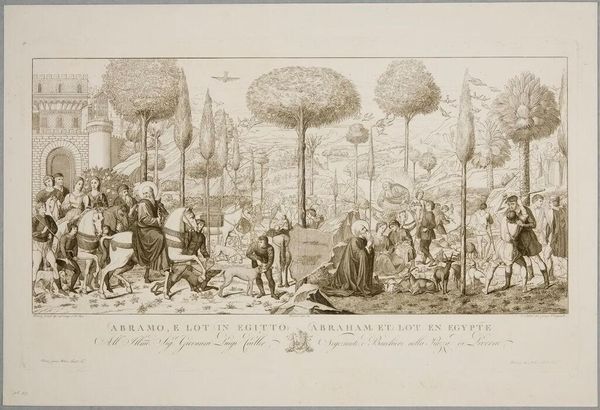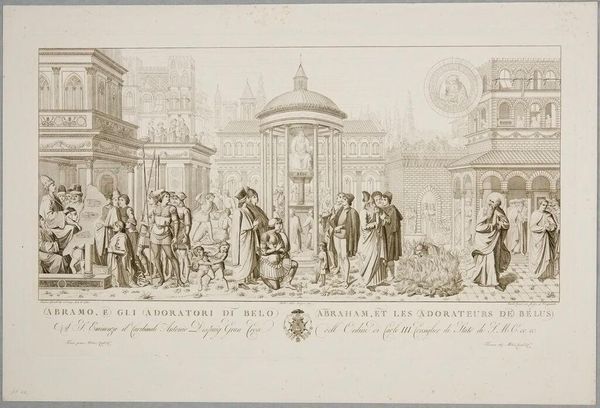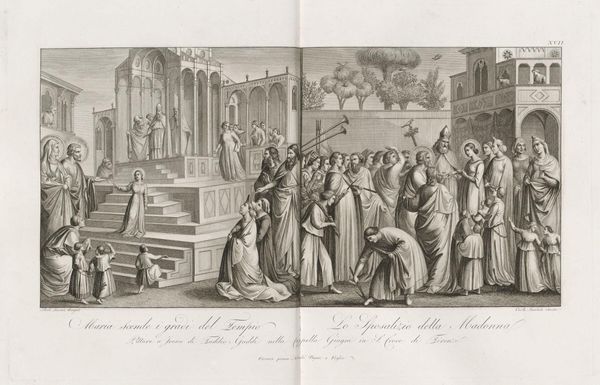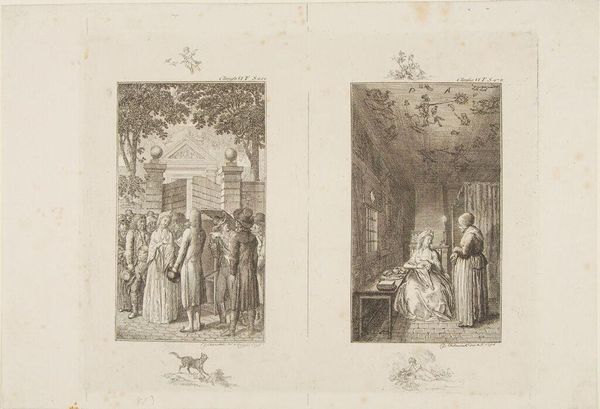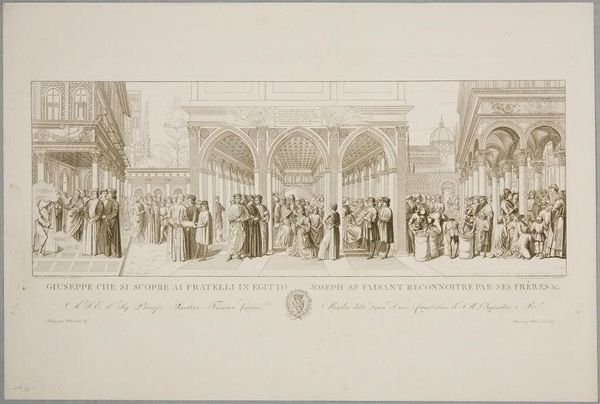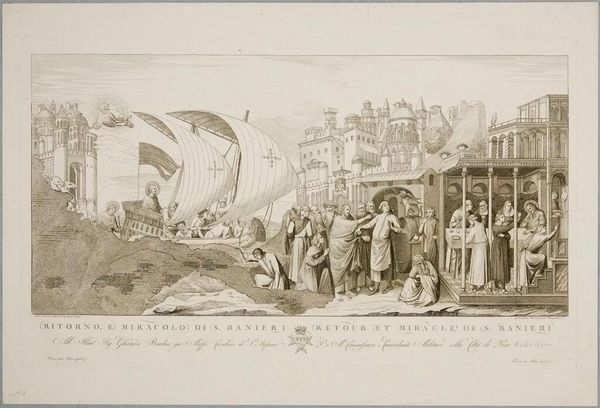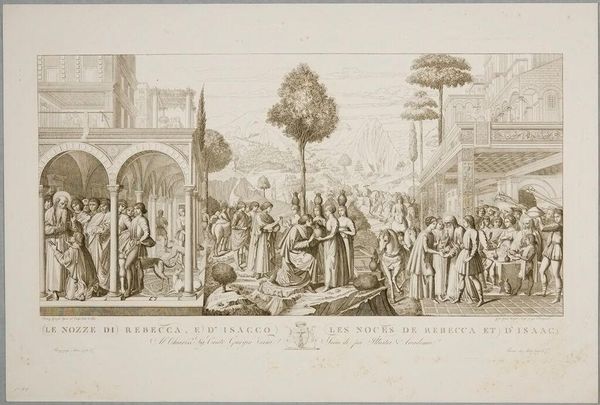
Copyright: CC0 1.0
Editor: This is Conte Carlo Lasinio's "The Innocence of Joseph," at the Harvard Art Museums. I'm struck by the linear quality and how the figures are arranged almost like actors on a stage. What do you see in this piece? Curator: I see a fascinating negotiation of material production. Consider the printing process itself – engraving relies on skilled labor, the availability of metal plates, and a printing press. These are commodities that impact how the narrative is disseminated and consumed by a specific audience. Editor: So, you're saying the way the artwork was made influences who gets to see it and what they take away from it? Curator: Precisely! The act of reproduction transforms the image into a consumable object, accessible to a wider public perhaps, but also embedded in a network of economic relationships. Editor: That's a totally different perspective than I had! Thanks. Curator: It’s important to remember that even images of innocence are products of complex systems.
Comments
No comments
Be the first to comment and join the conversation on the ultimate creative platform.
